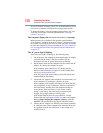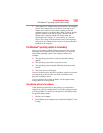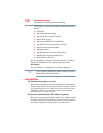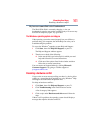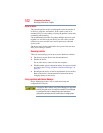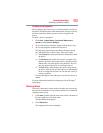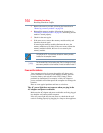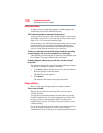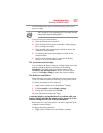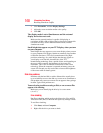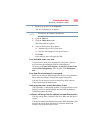
162
If Something Goes Wrong
Resolving a hardware conflict
A plan of action
The smooth operation of the system depends on the interaction of
all devices, programs, and features. If the system or one of its
attached devices is not working, resolving the problem can be time-
consuming and frustrating.
The recommended procedure for getting multiple devices to work
together is to add and set up one device at a time. After you add
each device, test it to make sure it and all previously connected
devices work.
The device most recently connected to the system is the one most
likely to be causing a conflict.
Resolving conflicts
There are several things you can do to resolve hardware conflicts:
❖ Get the most recent drivers from the manufacturer.
❖ Disable the device.
For an older device, remove it from the computer.
❖ Disable another system component and use its resources for the
new device. See “Fixing a problem with Device Manager” on
page 162.
❖ Reconfigure the device so that its requirements do not conflict.
Refer to the device’s documentation for instructions about
changing settings on the device.
Fixing a problem with Device Manager
Device Manager provides a way to check and change the
configuration of a device.
Changing the default settings using Device Manager can cause other
conflicts that make one or more devices unusable. Device Manager
is a configuration tool for advanced users who understand
configuration parameters and the ramifications of changing them.







